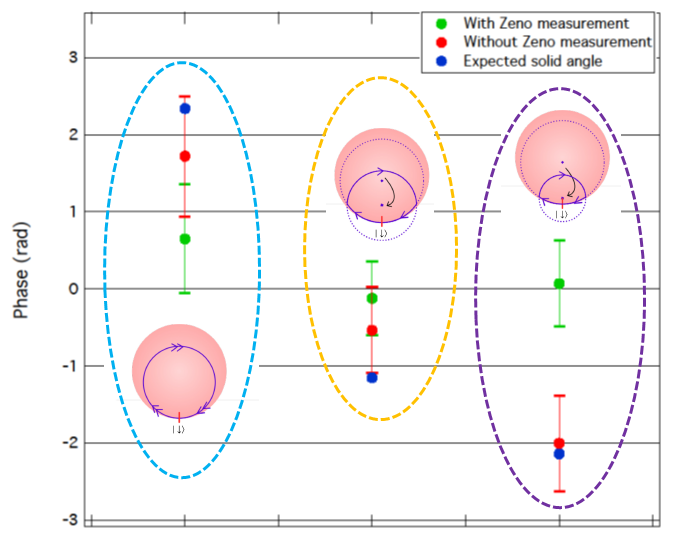 |
We devised a simple, totally passive scheme that enables to realize an inexpensive optical trapping apparatus free from thermal lensing effects. Our work just got published in Optics Express. C. Simonelli et al., |
LAST NEWS
 |
The paradoxical supersolid phase of matter has the apparently incompatible properties of crystalline order and superfluidity. A crucial feature of a one-dimensional supersolid is the occurrence of two gapless excitations reflecting the Goldstone modes associated with the spontaneous breaking of two continuous symmetries: the breaking of phase invariance, corresponding to the locking of the phase of the atomic wave functions at the origin of superfluid phenomena, and the breaking of translational invariance due to the lattice structure of the system. We demonstrate the supersolid nature of the coherent stripe regime we discovered in dipolar Bose-Einstein condensates. In our trapped system, the symmetry breaking appears as two distinct compressional oscillation modes, reflecting the gapless Goldstone excitations of the homogeneous system. We observe that the two modes have different natures, with the higher frequency mode associated with an oscillation of the periodicity of the emergent lattice and the lower one characterizing the superfluid oscillations. Our work paves the way to explore the two quantum phase transitions between the superfluid, supersolid and crystal-like configurations that can be accessed by tuning a single interaction parameter.
L. Tanzi, et al. See also the Nature News and Views by S. M. Mossman: S. M. Mossman, Sounds of a supersolid detected in dipolar atomic gases for the first time and the Nature Physics research highligh by Y. Li: Y. Li, The buried trace |
 |
A closed-trajectory evolution of a quantum state generally imprints a phase that contains both dynamical and geometrical contributions. While dynamical phases depend on the reference system, geometric phase factors are uniquely defined by the properties of the outlined trajectory. Here, we generate and measure geometric phases in a Bose-Einstein condensate of 87Rb using a combination of dynamical quantum Zeno effect and measurement-free evolution. We show that the dynamical quantum Zeno effect can inhibit the formation of a geometric phase without altering the dynamical phase. This can be used to extract the geometric Aharonov-Anandan phase from any closed-trajectory evolution without requiring knowledge or control of the Hamiltonian. H.–V. Do et al., |
 |
We report on the study of binary collisions between quantum droplets formed by an attractive mixture of ultracold atoms. We distinguish two main outcomes of the collision, i.e., merging and separation, depending on the velocity of the colliding pair. The critical velocity vc that discriminates between the two cases displays a different dependence on the atom number N for small and large droplets. By comparing our experimental results with numerical simulations, we show that the nonmonotonic behavior of vc is due to the crossover from a compressible to an incompressible regime, where the collisional dynamics is governed by different energy scales, i.e., the droplet binding energy and the surface tension. These results also provide the first evidence of the liquidlike nature of quantum droplets in the large N limit, where their behavior closely resembles that of classical liquid droplets. G. Ferioli et al., |
 |
Lorenzo Francesco Livi has been awarded with a prize from Florence University Press for the best PhD thesis discussed in 2018 at University of Florence among all the scientific disciplines. The prize will consist in the publication of the thesis, titled "New quantum simulations with ultracold Ytterbium gases", by Florence University Press. The diploma has been given to Lorenzo by Prof. Luigi Dei, Rector of the University of Florence, in a public ceremony. Congratulations! Lorenzo Francesco Livi |
